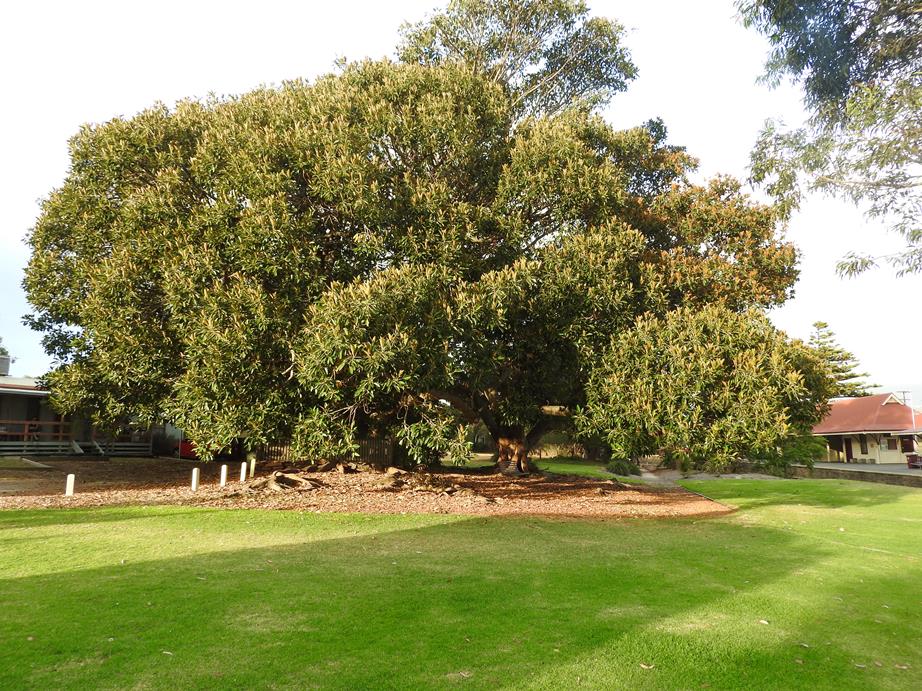Trees on Council Land
Importance of Trees
Trees are important in many ways: they play a variety of roles to support human and wild life. Trees have many functions that include the provision of oxygen, food and timber, improving air quality, conserving water and preserving soil. In the built environment, trees help to ameliorate the effects of the urban heat island effect by offering shade and also beautifying the urban landscape.
Council Tree Policy Framework
Alexandrina Council is responsible for the planting, care, control and management of all trees growing on land owned or under the care and control of Council.
The management of trees on Council land is governed by the Tree Management Policy and the Tree Management Procedure.
The purpose of this framework is to provide a guiding mechanism for the planting, maintenance, conservation and removal of trees on Council land including parks & gardens, urban biodiversity reserves, rural reserves, urban streets and rural roads.
Others Laws That Govern Tree Management
There are several Acts that govern the management of trees at the State and Federal level. Some of these Acts include:
- The Local Government Act 1999 makes the planting or removal of trees or other vegetation on a public road an offence if done without authorisation from Council.
- The Native Vegetation Act 1991 regulates the clearance of native vegetation, including trees on roadsides.
- The National Parks & Wildlife Act 1972 governs permits for collection of native plants/seeds.
Tree Planting
Council has an annual program of tree planting to help replace removed trees and to add to the number of trees that we already have in the district. According to the Tree Management Policy and the Tree Management Procedure, any tree that is removed must be replaced by two trees to compensate for the loss. The trees planting species list shows what species are suitable for different areas in the district.
Tree Maintenance
Council is responsible for the management and maintenance of all trees on Council land, including those that have been planted by residents on Council verges. Residents and ratepayers are not authorised to prune or remove trees on Council land without prior written approval from Council.
In rural areas, trees that are native to an area are afforded an additional layer of protection under the Native Vegetation Act and may not be pruned or removed without prior approval.
Tree Removals
Council views tree removal as an action of last resort. In cases where there is no viable alternative to removal, a tree removal fee applies. Tree removal fees are only charged in circumstances where a tree on Council land is being removed to facilitate access to private property.
Tree removal requests which meet other removal criteria (i.e. public safety) do not attract such charges.
- Tree Removal Fee – charged on a cost recovery basis if removed by Council or at the applicant’s cost if they arrange removal themselves with Council approval.
- Tree Replacement Fee ($535 inclusive of GST) – This fee subsidises Council’s planting and maintenance of replacement trees as part of our annual tree planting program.
- Tree Valuation Fee(25% of the lost amenity value) – only charged where there is a reasonable alternative to tree removal such as the relocation of services or access points, redesigning of the proposal, use of an established cross-over if available and/or pruning rather than removal. This does not apply to the removal of pest tree species.
Download the form Residential Landscaping Application and read Council's brochure for further details on Council Owned Trees - Assessment Removal Criteria.
How is the Amenity Value of Trees Determined?
There is a method for calculating the monetary value of trees, which forms the basis of how Council valuates tree in cases where removal is the last option. This method looks at various factors such as the age of the tree, how big it is, the type of tree, where it is located and generally the beauty it adds to the locality. These factors are combined to give a monetary value of the tree. Council will charge a fraction of this value as a means of compensating for the lost value of that tree when removed. Currently, that fraction is 25% of the lost amenity value. However, the lost amenity value fee does not apply to pest plant species [e.g. acacia saligna (western wattle)].
Refer to Appendix B of the Tree Management Procedure for a detailed explanation of the valuation method.
Below is a worked example:
Moreton Bay Fig

The Strand, Port Elliot planted 1879
Amenity value: $466,335
Lost Amenity Fee @25% of $466,335 = $116,584
